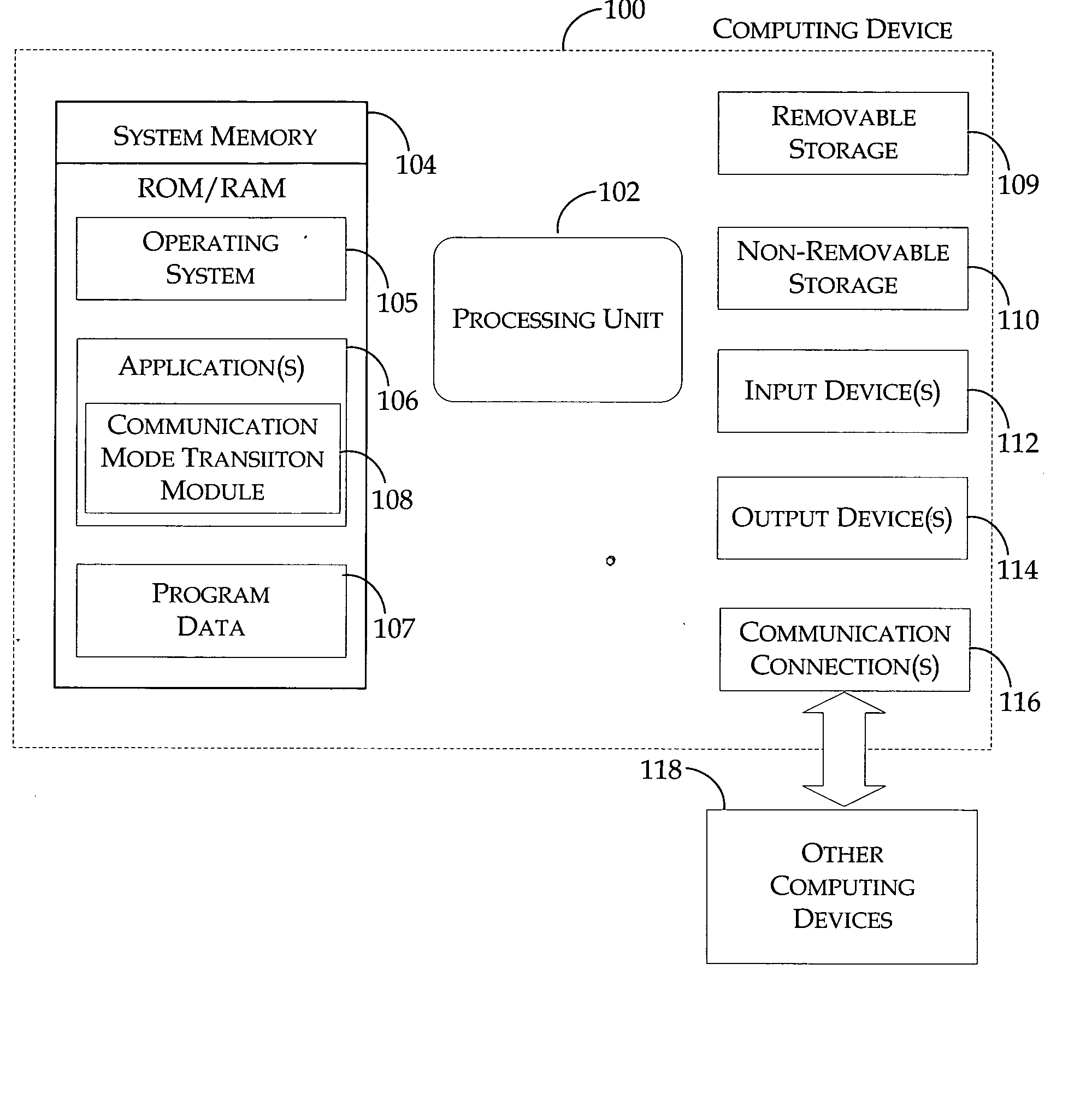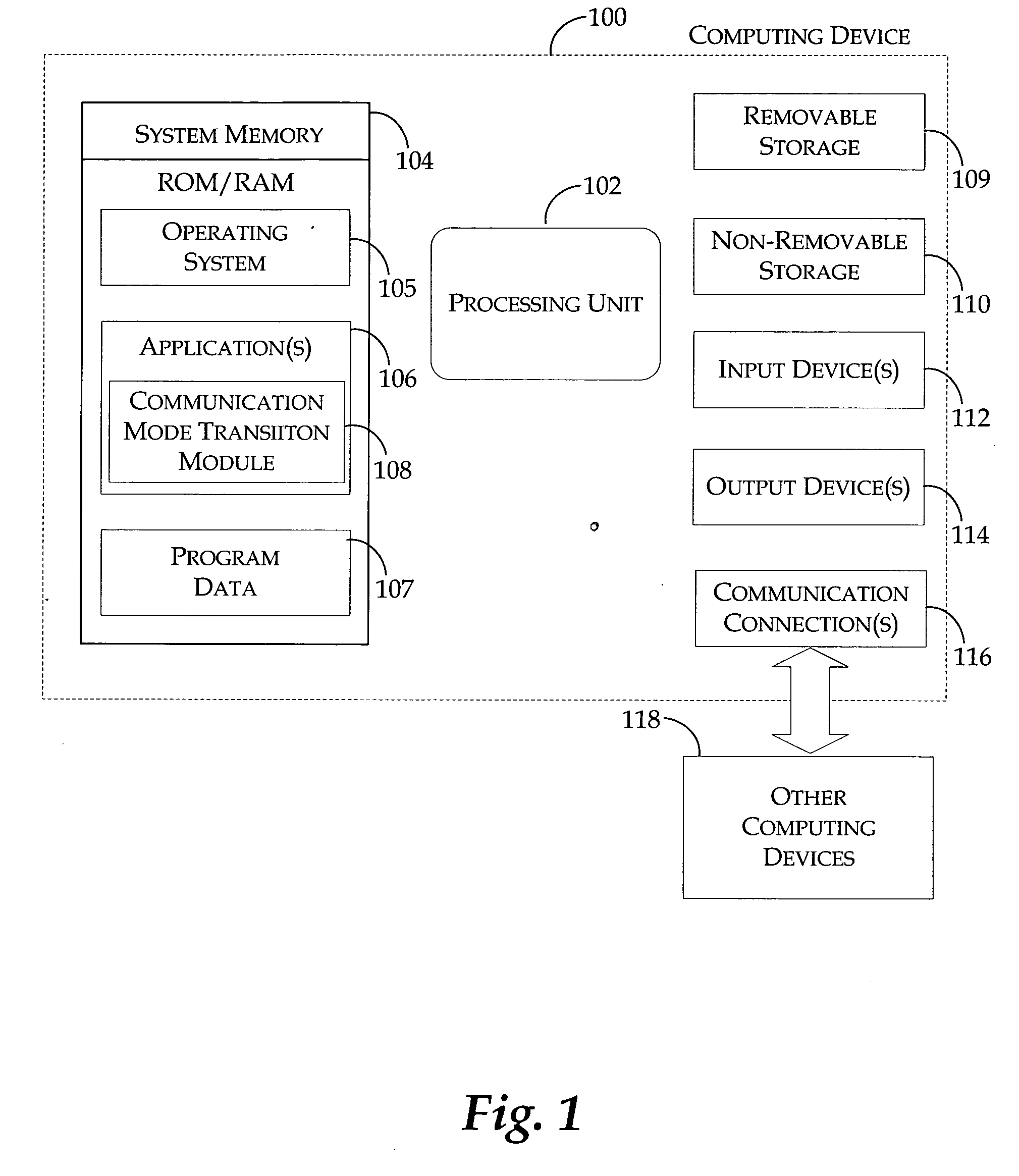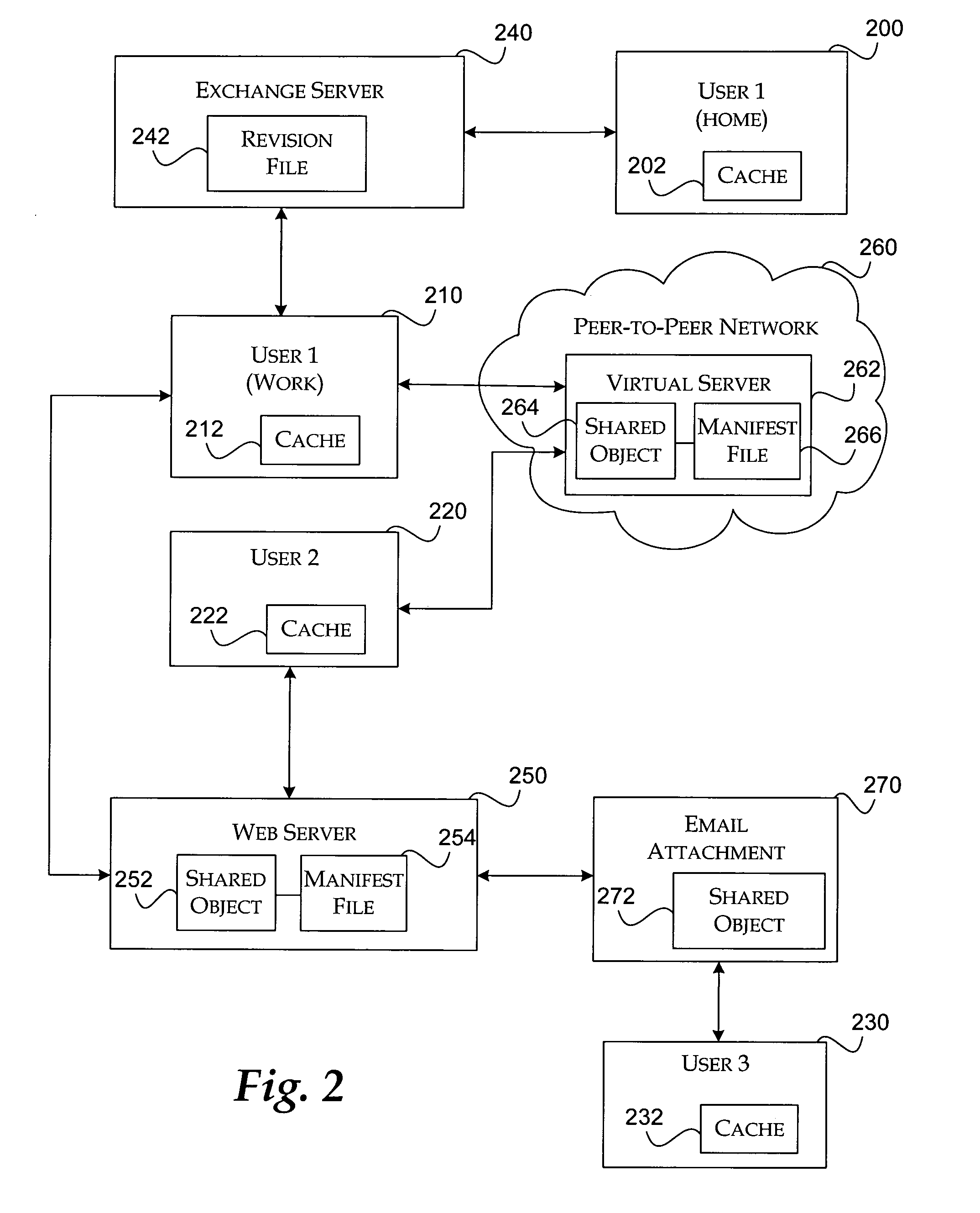Method and system for transitioning between synchronous and asynchronous communication modes
a communication mode and communication method technology, applied in the field of method and system for transitioning between synchronous and asynchronous communication modes, can solve problems such as the delay of synchronization of shared objects
- Summary
- Abstract
- Description
- Claims
- Application Information
AI Technical Summary
Benefits of technology
Problems solved by technology
Method used
Image
Examples
Embodiment Construction
[0017] The present invention is directed to a method and system for transitioning between synchronous and asynchronous communication modes. Many different users may access, revise and update the same shared object simultaneously through several different transports. Clients may communicate asynchronously by accessing the shared object through a physical server. Clients may also communicate synchronously by accessing the shared object through a peer-to-peer network.
[0018] Each shared object is associated with a manifest file. The manifest file identifies the locations where other versions and instances of the shared object are stored within the system. The client accesses a shared object and retrieves the associated manifest file from a location identified by a unique location identifier in the corresponding shared object. The shared object and the manifest file allow a client to transition seamlessly between local access, synchronous and asynchronous communication such that the use...
PUM
 Login to View More
Login to View More Abstract
Description
Claims
Application Information
 Login to View More
Login to View More - R&D
- Intellectual Property
- Life Sciences
- Materials
- Tech Scout
- Unparalleled Data Quality
- Higher Quality Content
- 60% Fewer Hallucinations
Browse by: Latest US Patents, China's latest patents, Technical Efficacy Thesaurus, Application Domain, Technology Topic, Popular Technical Reports.
© 2025 PatSnap. All rights reserved.Legal|Privacy policy|Modern Slavery Act Transparency Statement|Sitemap|About US| Contact US: help@patsnap.com



